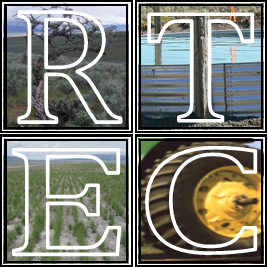The Rangeland Technology and Equipment Council (RTEC) is an informal
organization of land managers, engineers, academia, and private industry
representatives interested in developing new rehabilitation equipment and
strategies.
The roots of RTEC go back to 1946 when the need for new site preparation
and seeding equipment to stabilize watersheds and increase forage production on western USA
rangelands led to the organization of the Reseeding Equipment
Development Committee that was later (1958) renamed the Range Seeding
Equipment Committee.
These committees were instrumental in developing rangeland
rehabilitation equipment such as the rangeland drill, the most well
known implement that is still in use today. |

